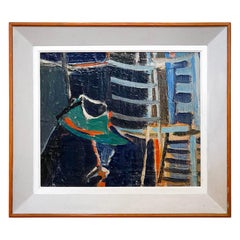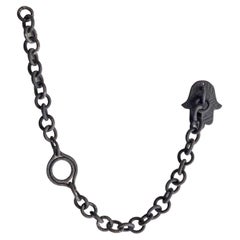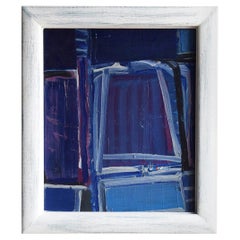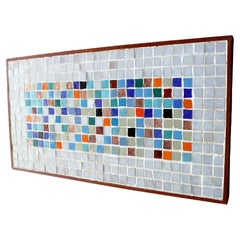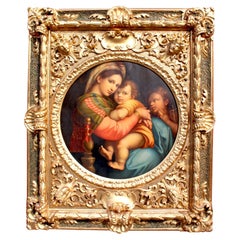Carved Decorative Art
Mid-20th Century French Mid-Century Modern Carved Decorative Art
Canvas, Wood, Paint
2010s American Organic Modern Carved Decorative Art
Ceramic, Stoneware
Late 20th Century French Mid-Century Modern Carved Decorative Art
Wood, Paint
17th Century Italian Baroque Antique Carved Decorative Art
Walnut
1950s American Mid-Century Modern Vintage Carved Decorative Art
Ceramic, Teak
Early 1900s Italian Baroque Antique Carved Decorative Art
Canvas, Giltwood
Mid-19th Century Italian Renaissance Revival Antique Carved Decorative Art
Wood, Giltwood
Late 19th Century Italian Baroque Revival Antique Carved Decorative Art
Canvas, Wood
18th Century French Louis XVI Antique Carved Decorative Art
Wood
Late 18th Century French Chinoiserie Antique Carved Decorative Art
Canvas, Giltwood
1880s Austrian Belle Époque Antique Carved Decorative Art
Wood, Giltwood
Early 1900s French Art Nouveau Antique Carved Decorative Art
Fruitwood
18th Century Italian Rococo Antique Carved Decorative Art
Gold Leaf
Mid-17th Century English Jacobean Antique Carved Decorative Art
Wood, Oak
Early 20th Century German Greco Roman Carved Decorative Art
Canvas, Giltwood
Mid-20th Century French Mid-Century Modern Carved Decorative Art
Canvas, Wood, Paint
Mid-20th Century French Mid-Century Modern Carved Decorative Art
Canvas, Wood, Paint
18th Century French Antique Carved Decorative Art
Canvas, Wood, Paint
1860s English William IV Antique Carved Decorative Art
Canvas, Wood, Giltwood, Paint
20th Century American Native American Carved Decorative Art
Wood
Early 1900s French Baroque Antique Carved Decorative Art
Canvas, Paint, Giltwood
Late 19th Century Austrian Vienna Secession Antique Carved Decorative Art
Gold Leaf
Early 19th Century French Louis XV Antique Carved Decorative Art
Canvas, Giltwood
Early 1900s French Art Nouveau Antique Carved Decorative Art
Fruitwood
19th Century Italian Neoclassical Antique Carved Decorative Art
Stone
Early 19th Century Antique Carved Decorative Art
Walnut
Mid-19th Century Indian Anglo-Indian Antique Carved Decorative Art
Silk, Blown Glass, Ebony
20th Century Indonesian Rustic Carved Decorative Art
Hardwood
18th Century and Earlier Italian Renaissance Antique Carved Decorative Art
Gold Leaf
Late 18th Century Swedish Gustavian Antique Carved Decorative Art
Mirror, Pine, Giltwood
Late 19th Century French Napoleon III Antique Carved Decorative Art
Metal
Early 20th Century Belgian Art Nouveau Carved Decorative Art
Wood
18th Century Rococo Antique Carved Decorative Art
Gold Leaf
Mid-20th Century Italian Art Deco Carved Decorative Art
Alabaster, Metal
20th Century Indonesian Classical Roman Carved Decorative Art
Wood
Early 19th Century Italian Grand Tour Antique Carved Decorative Art
Glass, Wood
Mid-19th Century English Romantic Antique Carved Decorative Art
Cork
Mid-20th Century French Organic Modern Carved Decorative Art
Wood, Pine
17th Century Italian Baroque Antique Carved Decorative Art
Canvas, Giltwood
21st Century and Contemporary Italian Carved Decorative Art
Crystal, Stainless Steel
16th Century Belgian Gothic Antique Carved Decorative Art
Oak
Late 17th Century Portuguese Baroque Antique Carved Decorative Art
Pine
Early 1900s French Baroque Antique Carved Decorative Art
Canvas, Paint, Giltwood
Early 1900s French Rococo Antique Carved Decorative Art
Wood
19th Century English Antique Carved Decorative Art
Oak
20th Century Spanish Mid-Century Modern Carved Decorative Art
Wood
18th Century French Antique Carved Decorative Art
Wood
Late 17th Century Portuguese Baroque Antique Carved Decorative Art
Pine
Early 1900s Italian Baroque Antique Carved Decorative Art
Canvas, Giltwood
19th Century French Antique Carved Decorative Art
Wood
Early 20th Century French Art Nouveau Carved Decorative Art
Glass, Wood
Mid-18th Century Italian Rococo Antique Carved Decorative Art
Gold Leaf
Late 19th Century Swiss Black Forest Antique Carved Decorative Art
Wood
Mid-17th Century Dutch Antique Carved Decorative Art
Wood
18th Century French Classical Roman Antique Carved Decorative Art
Oak
Mid-20th Century Chinese Chinese Export Carved Decorative Art
Wood
Mid-19th Century French Gothic Antique Carved Decorative Art
Glass, Wood, Paper, Oak, Ash
1850s French French Provincial Antique Carved Decorative Art
Mother-of-Pearl
19th Century French Louis XVI Antique Carved Decorative Art
Wood
Late 19th Century Austrian Belle Époque Antique Carved Decorative Art
Canvas, Giltwood
Read More
At Colonial Williamsburg, Everything Old Is New Again
With the help of a new director, the Virginia institution's folk art and decorative arts museums are undergoing extensive upgrades.
New York’s Hirschl & Adler Showcases the American Workmanship and Design Panache of Neoclassical Treasures
The gallery's latest exhibition proves that museum-quality pieces entice and inspire, whether in traditional or more modern interiors.
